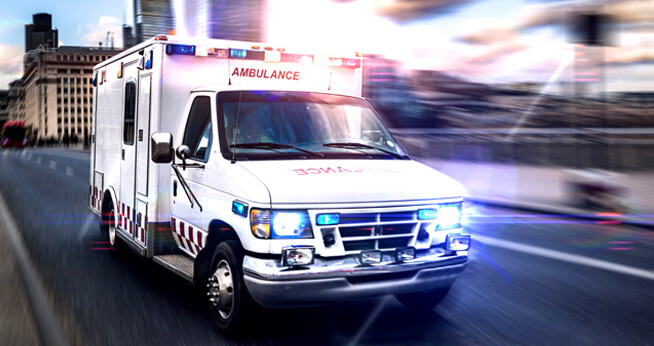Accidents Involving Emergency Vehicles: Who Is Liable?

When a private individual causes a car accident, anyone injured by his or her negligence can pursue compensation through a personal injury claim. However, if the at-fault party is a government employee, emergency vehicle driver, or a police officer in California, the rules for pursuing legal action are very different. Most government agencies and offices have sovereign immunity, a legal doctrine that immunizes them from civil claims for damages. However, filing a lawsuit against a local, state, or even federal government office is possible under certain conditions.
Common Issues When Suing the Government
If an injured party wishes to file a claim for a personal injury he or she must do so within the applicable statute of limitations or time limit for filing. Most states uphold a two to three year statute of limitations for injury claims, but claims against government entities typically allow a much smaller window for filing claims. In some jurisdictions, the statute of limitations could be as short as 60 to 90 days.
It is possible for sovereign immunity to completely shield an at-fault government party from liability for a vehicle accident, even if the victim had little to no fault in causing the accident. Some government agencies provide a window for filing administrative claims for damages. The claimant must provide a detailed explanation of the situation in question and meet all applicable filing requirements. If the agency accepts the claim, the claimant receives a settlement. If the agency denies the claim, the claimant has the opportunity to pursue a lawsuit in a court of law, but doing so is very different than taking legal action against another private party.
A Higher Burden of Proof
The burden of proof is also higher for claims against government entities. Proving negligence in a personal injury case against another private party generally requires proving that the at-fault party either directly caused the plaintiff’s damages or proving that the plaintiff’s damages would not have happened but for the defendant’s negligence. In a lawsuit against a government agency, the plaintiff may need to provide additional evidence that a government employee acted beyond the scope of negligence in a given situation.
For example, an ambulance driver responds to a 911 call but neglects to engage the vehicle’s siren. The ambulance runs a red light (which in most cases is legal for ambulances responding to emergencies) and collides with another driver. If the ambulance driver had properly engaged the siren, the struck driver may have avoided the accident. If the ambulance driver was driving under the influence, this would also increase the chances of the struck driver succeeding with an injury claim.
What Is the “Move Over” Law in California?
As of January 1, 2017, California upholds the Move Over law which requires drivers to use extra caution when driving near emergency vehicles or tow trucks with flashing amber warning lights. This law requires a driver to move to another lane that is not adjacent to the lane with the lit vehicle when passing. If this is not possible, a driver must slow to a reasonable speed for conditions and provide a safe amount of distance between the driver’s vehicle and the emergency vehicle or tow truck with flashing amber lights.
Failure to Yield to an Emergency Vehicle In California
Violations of the Move Over law often result in fines of $50, but it is essential for all California drivers to understand the importance of safe driving around emergency vehicles. Driving too close to these vehicles can interfere with their job duties and potentially lead to serious accidents.
Taking legal action against a government entity is already very complicated and any amount of comparative negligence on the part of the claimant can significantly hinder the claimant’s ability to secure an administrative claim settlement or jury verdict in court. Ultimately, it is always best to drive as carefully as possible around emergency vehicles and speak with an attorney as soon as possible after any accident with a government vehicle.

